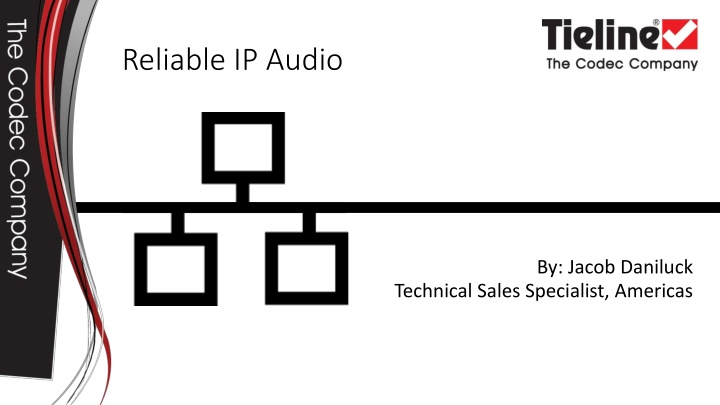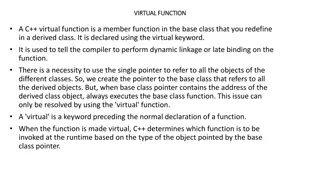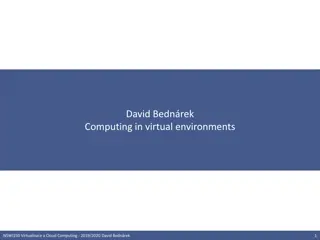Apprenticeship Virtual Learning Community Agenda
Welcome to the virtual learning community agenda led by Lavon Nelson and Angela Gerberding on December 15, 2023. Updates, funding, state partnerships, and apprenticeship plan discussions await. Explore ICCB board goals tied to apprenticeships, vision, and mission, and get insights from the recent meeting. Engage in poll questions and gain knowledge on apprenticeships across various sectors.
Download Presentation

Please find below an Image/Link to download the presentation.
The content on the website is provided AS IS for your information and personal use only. It may not be sold, licensed, or shared on other websites without obtaining consent from the author.If you encounter any issues during the download, it is possible that the publisher has removed the file from their server.
You are allowed to download the files provided on this website for personal or commercial use, subject to the condition that they are used lawfully. All files are the property of their respective owners.
The content on the website is provided AS IS for your information and personal use only. It may not be sold, licensed, or shared on other websites without obtaining consent from the author.
E N D
Presentation Transcript
Reliable IP Audio By: Jacob Daniluck Technical Sales Specialist, Americas
Insurance for IP Audio Algorithmic Error Concealment Forward Error Correction Quality of Service Packet Replication Network Diversity Time Diversity
Insurance for IP Audio Algorithmic Error Concealment Zero Insertion Designed to simply replace lost data with a zero. Very simple design, but does it really conceal an error. Not used as much today, but can still be found in some implementations of specific algorithms in older broadcast equipment
Insurance for IP Audio Algorithmic Error Concealment Waveform substitution Reconstructs by repeating a portion of already received audio. Similar techniques do account for frequencies, gap durations, audio amplitude, etc. This is by far the simplest form of error concealment.
Insurance for IP Audio Algorithmic Error Concealment Interpolation Designed to make educated guesses about the nature of missing packets.
Insurance for IP Audio Forward Error Correction Act of embedding an additional data-correction stream from the transmitter unit. The data-correction stream is designed to operate to help correct missing data received at the decoder. This technique does require additional throughput, but can be useful when no other options are available.
Insurance for IP Audio Quality of Service Differentiated Services (DiffServ) RFC 2474 Class Based Mechanism for Traffic Management over a Network Interface This mechanism acts as a framework to provide internet routers the ability to differentiate types of traffic based on their class.
Insurance for IP Audio Quality of Service DiffServ Classes Default Forwarding Typically uses a Best-Effort forwarding characteristics Expedited Forwarding Provides Low-Delay, Low-Loss, and Low-Jitter Characteristics Assured Forwarding Provides assurance of delivery as long as traffic doesn t exceed some subscribed rate. This Class has subgroups built-in for priority on dropping packets Class Selector Used prior to Differentiated Services. This uses a simpler version of DiffServ
Insurance for IP Audio Packet Replication: The process of coping an IP Packet and sending it out any network interface, first used on Cisco Switches This process typically requires a secondary stream to be established between the Server and Client This process can provide a second copy of the audio data packet Why Should you use Packet Replication? As IP Packet Data is sent across the Public Internet, there can sometimes be collusion on Routing Servers that will have to drop the Packet at certain times. Therefore, the idea of a second identical packet being dropped is small
Insurance for IP Audio Network Diversity: The process of using a secondary network with Packet Replication This is not a failover technique For a Audio IP Path to be truly diverse, the network paths provided must be unrelated ISP A and ISP B could be running two different forms of communication, but share a common drop point in the real world Both lines are running across the same phone pole Both lines share a common path Example of recommended setup Fiber Path for Primary Cable, DSL, or Private IP link for Secondary Why should you use Network Diversity? This technology is designed to provide not only a reliable link, but a redundant link. When setting up a Network Diverse connection with your IP Audio equipment, this will create a secondary link through a separate network to your end point destination
Insurance for IP Audio Time Diversity: The process of using Packet Replication at a slightly longer delay (ms) than the original stream Why should you use Time Diversity? The same principles of using Packet Replication are applied. If you are sending out a secondary stream the chances of a router dropping a packet are small. Adding in a secondary stream at a slightly longer delay will decrease the chances of dropping audio packets even more.
Tools to Troubleshoot IP Audio Manufacturer Provided Tools Pre-Installed OS tools 3rdParty Tools
Tools to Troubleshoot IP Audio Manufacturer Provided Tools: Each Manufacturer will provide some troubleshooting Typically each manufacturer will provide you some statistically information regarding: Audio IP Manufactures: Packet Loss Packets that just never arrived to the endpoint (Typically refers to UDP Audio Streams) Packets Arriving Late Packets that arrived Buffer Output Time Typically in milliseconds Network Equipment Manufacturer: Packet Loss Packets that were simply lost over the network (Refers to TCP link since there is validation provided) Network Collusions Two PCs sending data two a switch at the same time going to same destination Packet Monitoring Ability to monitor packets as the upload and download from the network Typically these tools will inform you if there is something wrong within the link They will not tell you what is wrong
Tools provided by Manufactures These are typically common tools that can help provide insight into many problems Lost/Missing Packet Data Normally means that there is a rouge network device between A and B that is preventing some data from transmitting Late Packet Data Normally an indicator that there are high-congestion delays within a specific network node
Tools provided by Manufactures These are typically common tools that can help provide insight into many problems Packet Capture Interface Typically found on enterprise grade network equipment Used to capture network capture for later debugging Packet Loss Counter Found in most network routers and switches. These will typically just display how much traffic has been lost/misplaced. These counters typically refer to TCP traffic, and not UDP traffic
Tools to Troubleshoot IP Audio Pre-Installed OS Tools Ping (ping) Good for testing whether or not a link is online Trace Route (tracert) Good for testing the route in which audio flows Name Server lookup Good for validating that your DNS work flow
What can a PING? Command: Windows/Linux: ping The Ping Command Tool built within most operating systems can be used to help determine if something is available Examples of PING Results (from Windows): Results Breakdown: Reply: Destination that replied Bytes: Size of the Echo Request Time: Response time from destination TTL: Specified Time to Live Ping Statistics: Data collected from the results Pinging 162.17.7.249 with 32 bytes of data: Reply from 162.17.7.249: bytes=32 time=84ms TTL=255 Reply from 162.17.7.249: bytes=32 time=2ms TTL=255 Reply from 162.17.7.249: bytes=32 time=2ms TTL=255 Reply from 162.17.7.249: bytes=32 time=2ms TTL=255 Ping statistics for 162.17.7.249: Packets: Sent = 4, Received = 4, Lost = 0 (0% loss), Approximate round trip times in milli-seconds: Minimum = 2ms, Maximum = 84ms, Average = 22ms
What can be determined? In the world of Audio over IP, a ping can determine one thing Whether or not the destination network stack is alive.
What can a Trace Route? Command: Windows: tracert Linux: traceroute Think of Trace Route as the equivalent to you tracing the path of the audio cable throughout your studio. Trace Route is used to determine the path between two IP nodes In the case of troubleshooting audio, this could be the path between your studio and your transmitter tower Trace Route specifically targets the routers in between the source and destination
What can a Trace Route? Tracing route to 203.38.199.161 over a maximum of 30 hops Example (from Windows): 1 10 ms 4 ms 8 ms 192.168.162.1 2 13 ms 18 ms 17 ms 96.120.112.193 3 15 ms 15 ms 16 ms 96.110.168.117 4 14 ms 17 ms 18 ms 68.87.231.189 5 41 ms 37 ms 37 ms be-3-ar01.area4.il.chicago.comcast.net [68.86.188.181] 6 37 ms 34 ms 33 ms be-33491-cr02.350ecermak.il.ibone.comcast.net [68.86.91.165] 7 74 ms 69 ms 61 ms be-10521-cr02.1601milehigh.co.ibone.comcast.net [68.86.85.170] 8 63 ms 56 ms 49 ms be-12021-cr01.champa.co.ibone.comcast.net [68.86.84.225] 9 73 ms 77 ms 77 ms be-11020-cr02.sunnyvale.ca.ibone.comcast.net [68.86.84.9] 10 80 ms 75 ms 76 ms be-11083-pe02.529bryant.ca.ibone.comcast.net [68.86.84.14] 11 97 ms 73 ms 77 ms 134.159.63.157 12 80 ms 80 ms 75 ms i-92.paix-core02.telstraglobal.net [202.84.247.42] 13 300 ms 302 ms 313 ms i-20107.sydp-core03.telstraglobal.net [202.84.136.5] 14 295 ms 306 ms 295 ms bundle-ether3.pad-gw10.sydney.telstra.net [203.50.13.85] 15 260 ms 256 ms 268 ms bundle-ether2.pad-gw11.sydney.telstra.net [203.50.6.59] 16 249 ms 254 ms 256 ms bundle-ether3.ken-core10.sydney.telstra.net [203.50.6.60] 17 271 ms 266 ms 268 ms bundle-ether10.win-core10.melbourne.telstra.net [203.50.11.123] 18 282 ms 273 ms 276 ms bundle-ether2.fli-core10.adelaide.telstra.net [203.50.6.228] 19 312 ms 307 ms 309 ms bundle-ether3.wel-core10.perth.telstra.net [203.50.6.233] 20 306 ms 306 ms 307 ms bundle-ether1.wel-edge901.perth.telstra.net [203.50.6.215] 21 303 ms 302 ms 309 ms tie2755500.lnk.telstra.net [110.145.176.138] 22 308 ms 306 ms 362 ms 203.38.199.161 Trace complete.
What can a trace route help determine? A Trace Route will provide some information about the overall link Trace Route will provide a response time for each packet sent across It will also determine if a network router is misconfigured (Reponses in Results will be Destination net unreachable
What about Name Services? Command: Windows: nslookup Linux: dig (may have to install) Some stations across the globe use a service called Domain Name Servicing. This service converts an IP Address to a user-friendly domain name. Example: 64.68.203.168 equals www.tieline.com Example Results (from Windows): Server: one.one.one.one Address: 1.1.1.1 Non-authoritative answer: Name: www.tieline.com Address: 64.68.203.168
What about Name Services? This command is only useful to determine if your domain name is still active.
Tools to Troubleshoot IP Audio 3rd Party Software Tools iPerf3 (www.iperf.fr) Great application for testing LAN/WAN throughput between two locations Provides stats for throughput and bandwidth available Useful for testing both TCP and UDP services Wireshark (www.wireshark.org) Great application for debugging packet level problems Simple Network Management Protocol (SNMP) Great protocol to use to simply keep you informed on what is happening with your network Can be used with any IP system that supports SNMP
3rd Party Tools - iPerf iPerf is a network throughput tool This application tool requires the use of a server and client (i.e. two installations) This application does require proper network forwarding. Provides throughput for both TCP and(or) UDP traffic
3rd Party Tools Using iPerf Command Line Interface tool Some Graphical User Interfaces are available for specific OS Linux: jPerf Windows: Opensource GitHub Development Windows: WindowsPerf (Paid License Not Tested) Limited in how much throughput is achievable
3rd Party Tools Wireshark A Tool designed to act as an oscilloscope for IP Data Formerly called a packet capture device Allows for a laptop/desktop to intercept packets from the network and capture them in a log The data captured is maintained in its packet form Wireshark also provides some tools to decode packet data (i.e. turning raw AES67 traffic into a playable audio stream)
3rd Party Tools Using Wireshark Wireshark is designed as a universal tool. It can be installed on multiple operating systems (Windows, macOS, Linux-Based OS) Comes complete with a Command Line Toolkit Also, comes complete with a GUI toolkit
3rd Party Tools SNMP Simple Networking Management Protocol Not an application, but a protocol defined for the internet This protocol provides management tools to be alerted and set specific settings on network devices Not all network devices support a SNMP Agent SNMP has multiple versions (i.e. SNMPv1, SNMPv2, SNMPv3) SNMPv1 Basic Original Design SNMPv2 Adds some enhancement, and introduced the SNMP Inform SNMPv3 Adds Security to SNMPv2
3rd Party Tools Using SNMP SNMP has a lot of terms that are specific to using SNMP Set Set a command on the SNMP Agent Traps Information being sent from the SNMP Agent Informs Information that is sent from the SNMP agent, but issues a confirmation that the data has been received/acknowledged. Etc. As SNMP is a protocol it requires the use of an SNMP Manager Multiple SNMP Managers are available Ranging from Open Source to Paid Managed Licenses
Review Knowing a little bit about Audio over IP can help in the long run Understanding manufactures equipment can help increase the reliability of remote broadcasts, or even IP Audio STL solutions. Understanding 3rd party tools can help track down problems.























